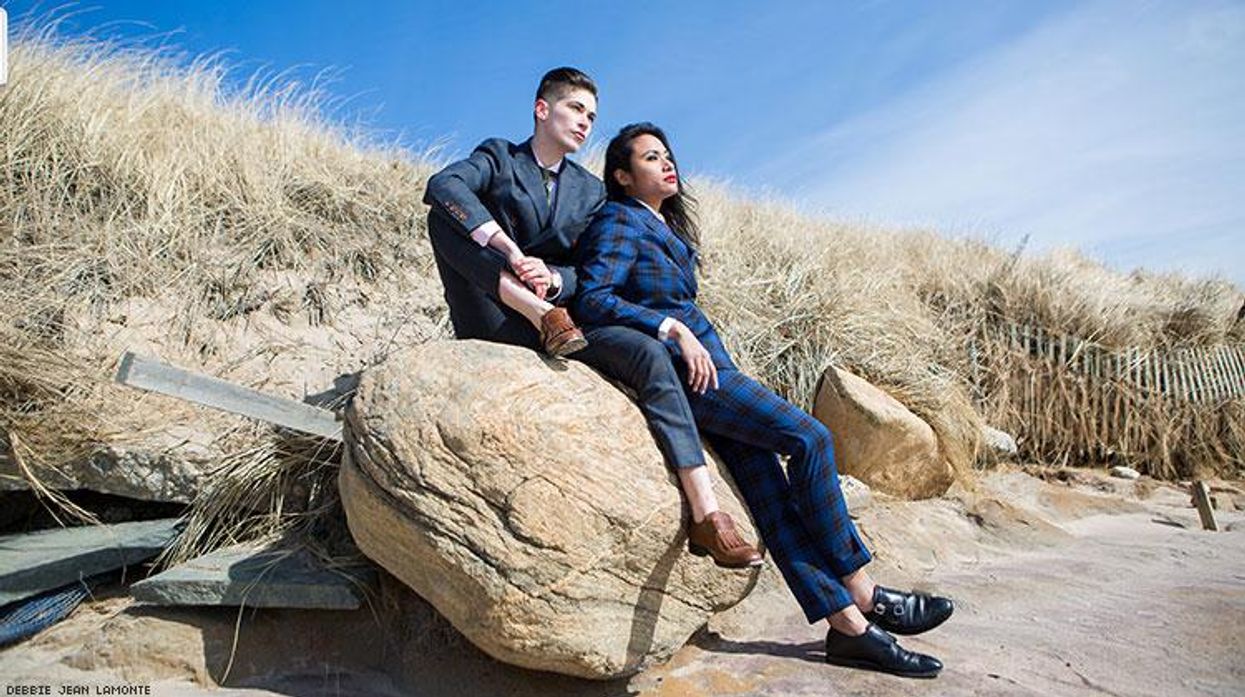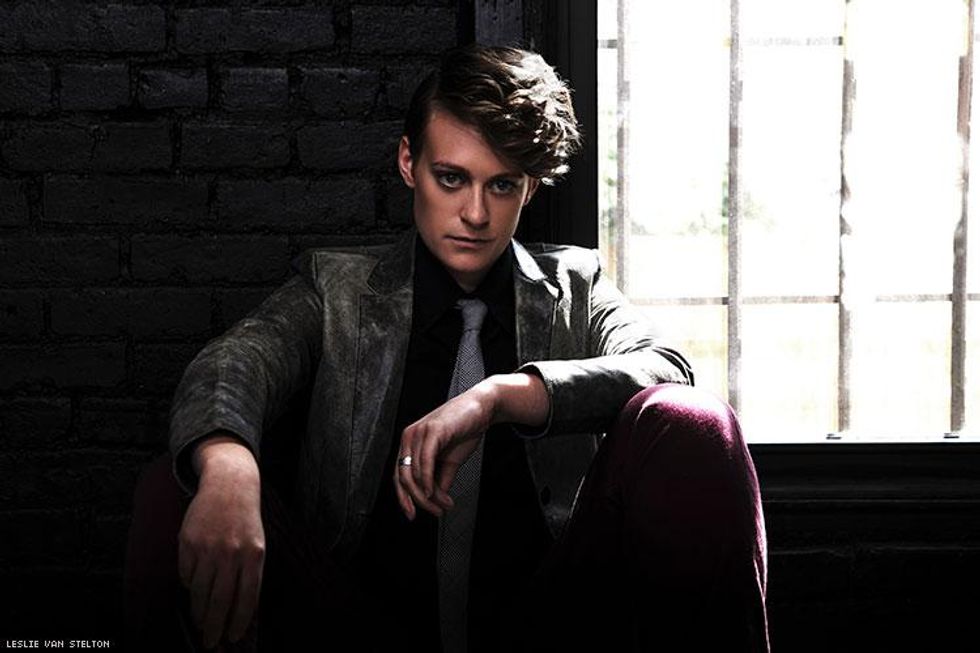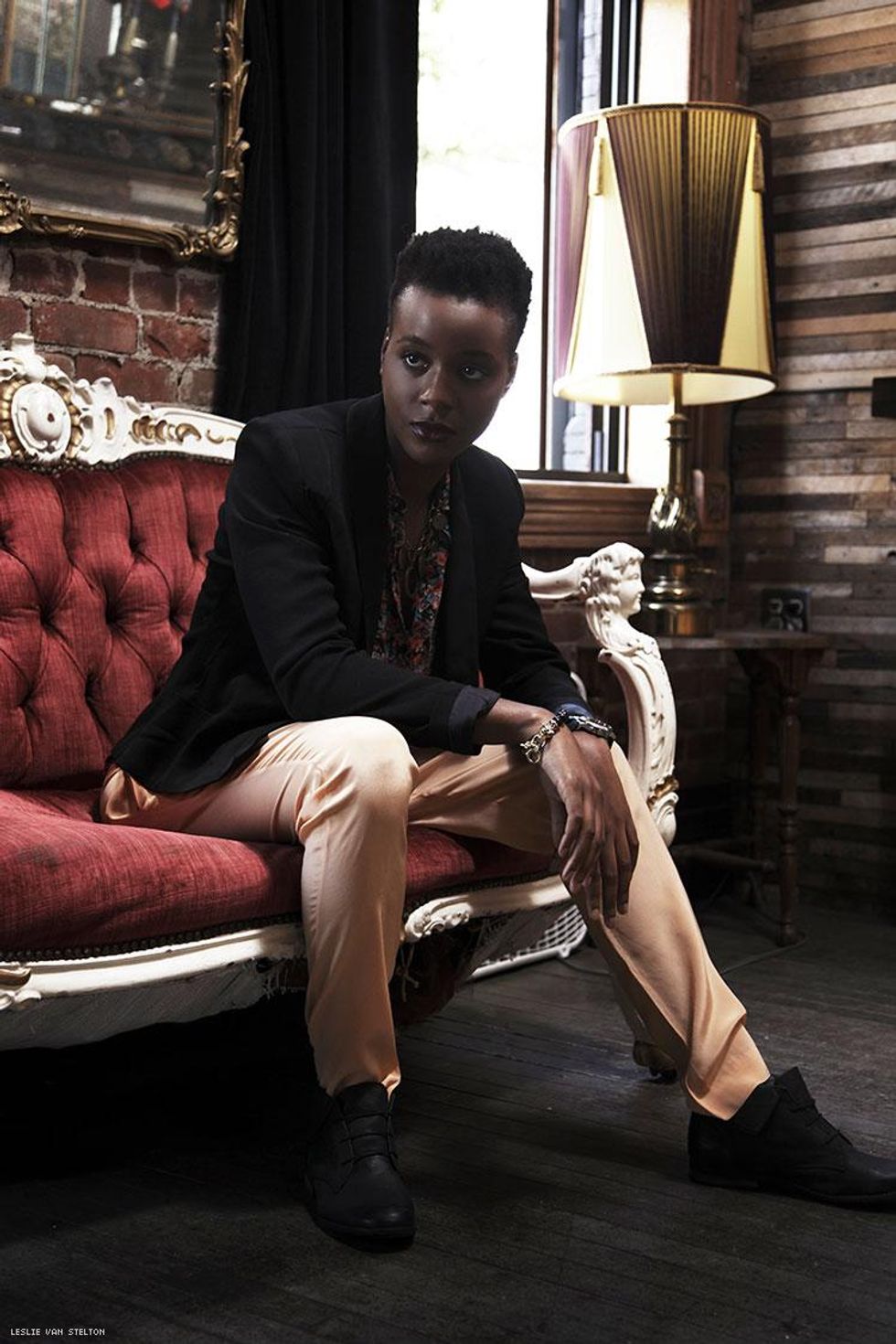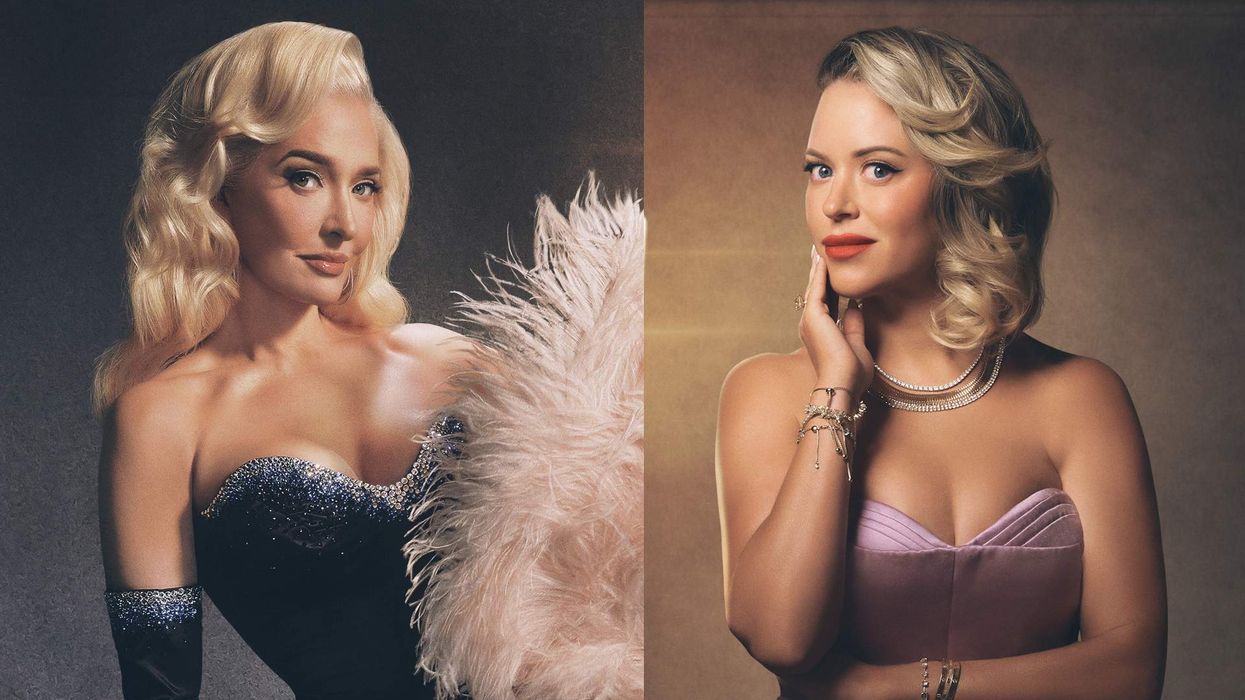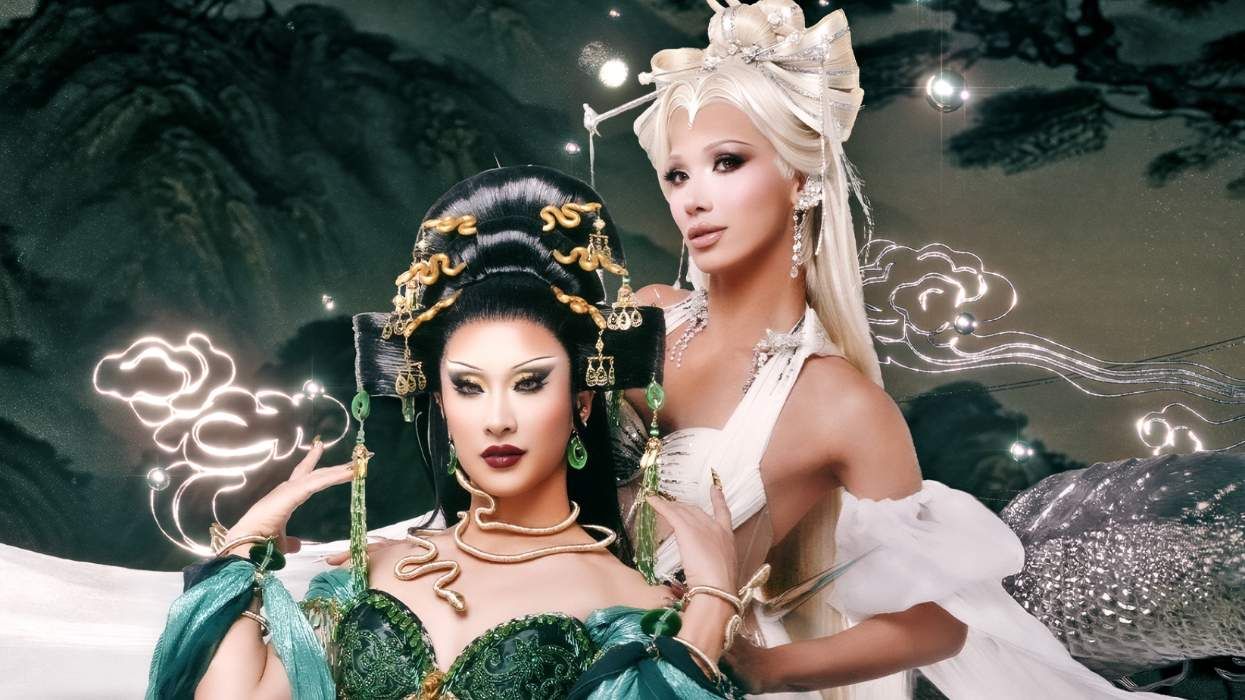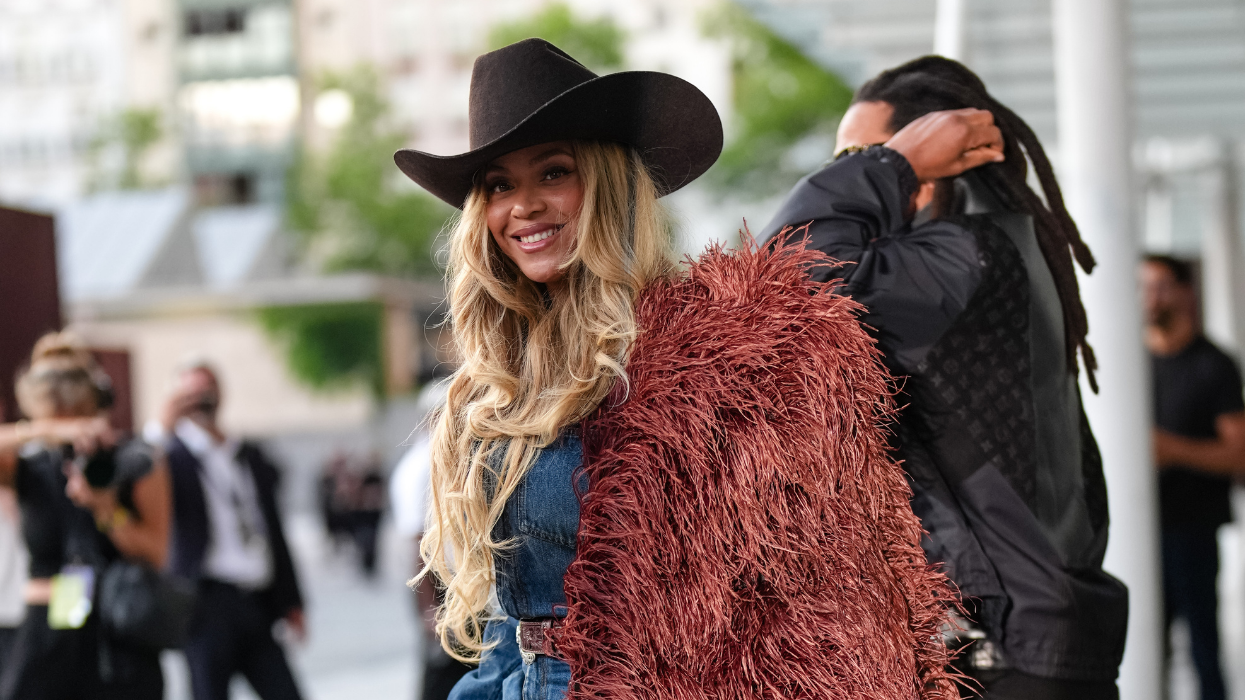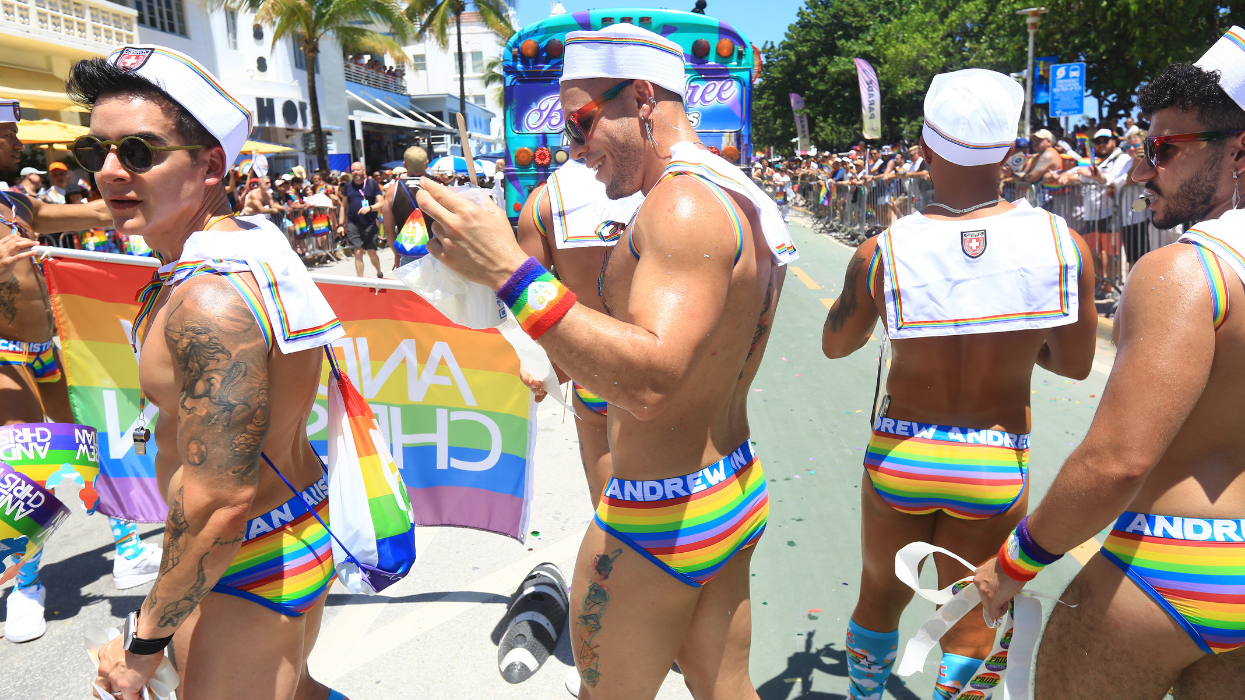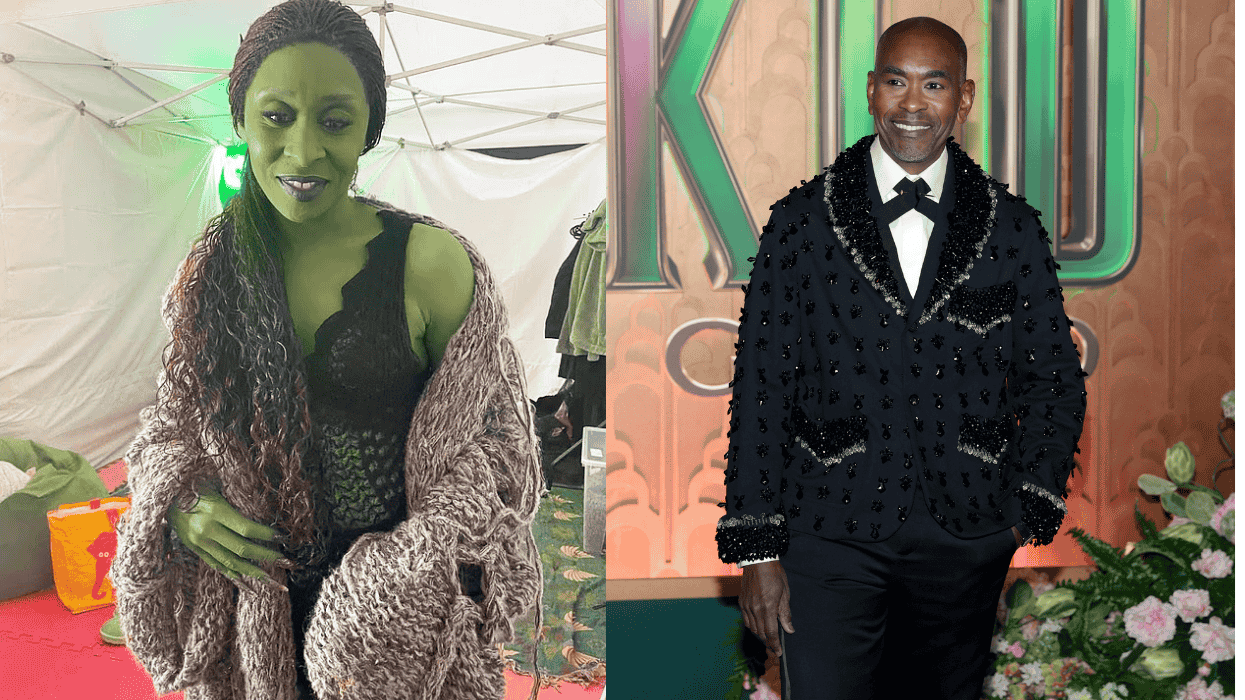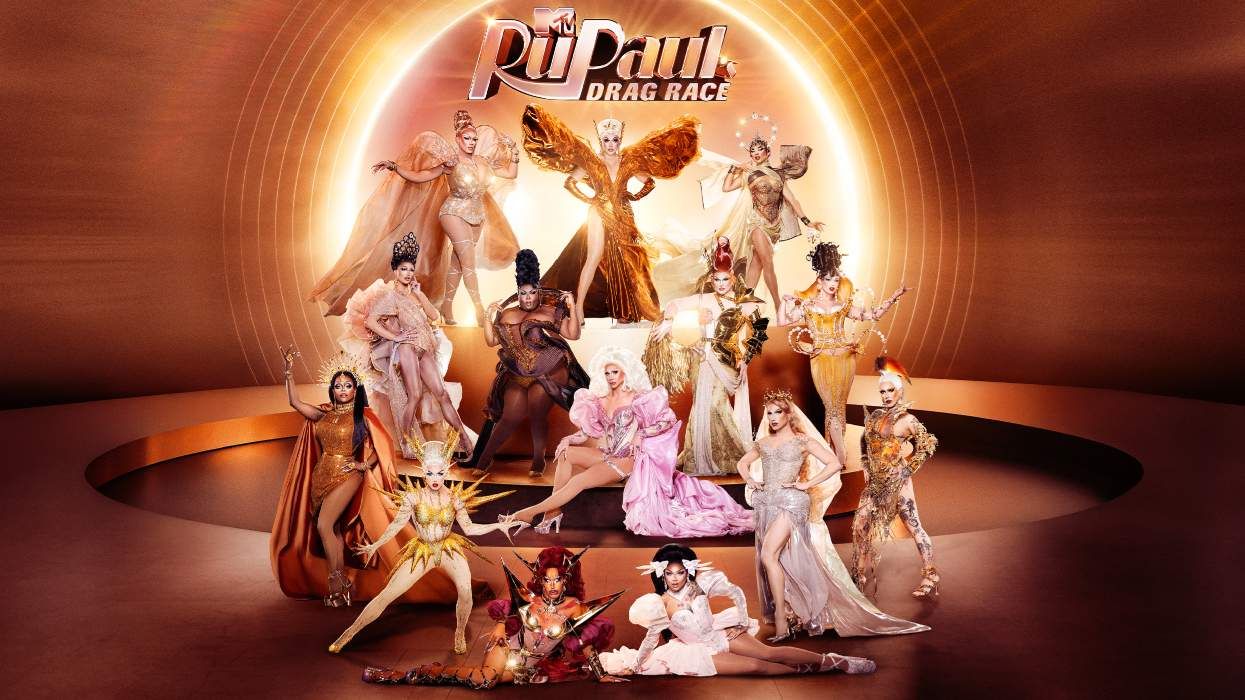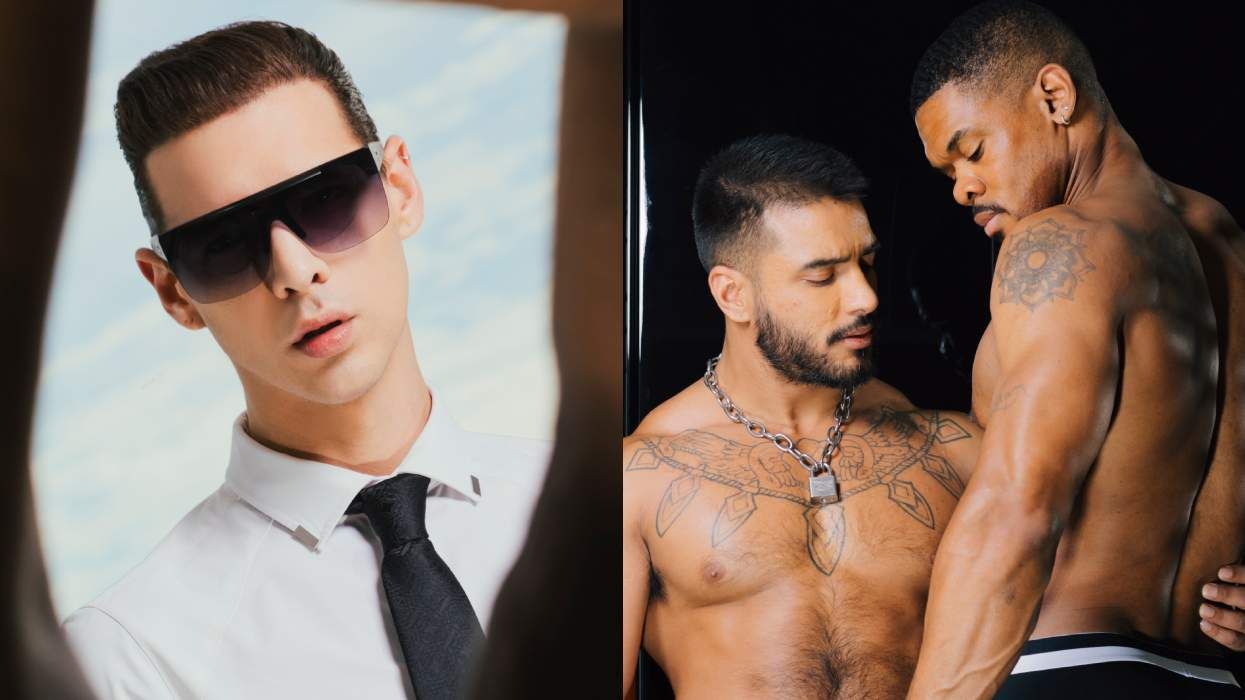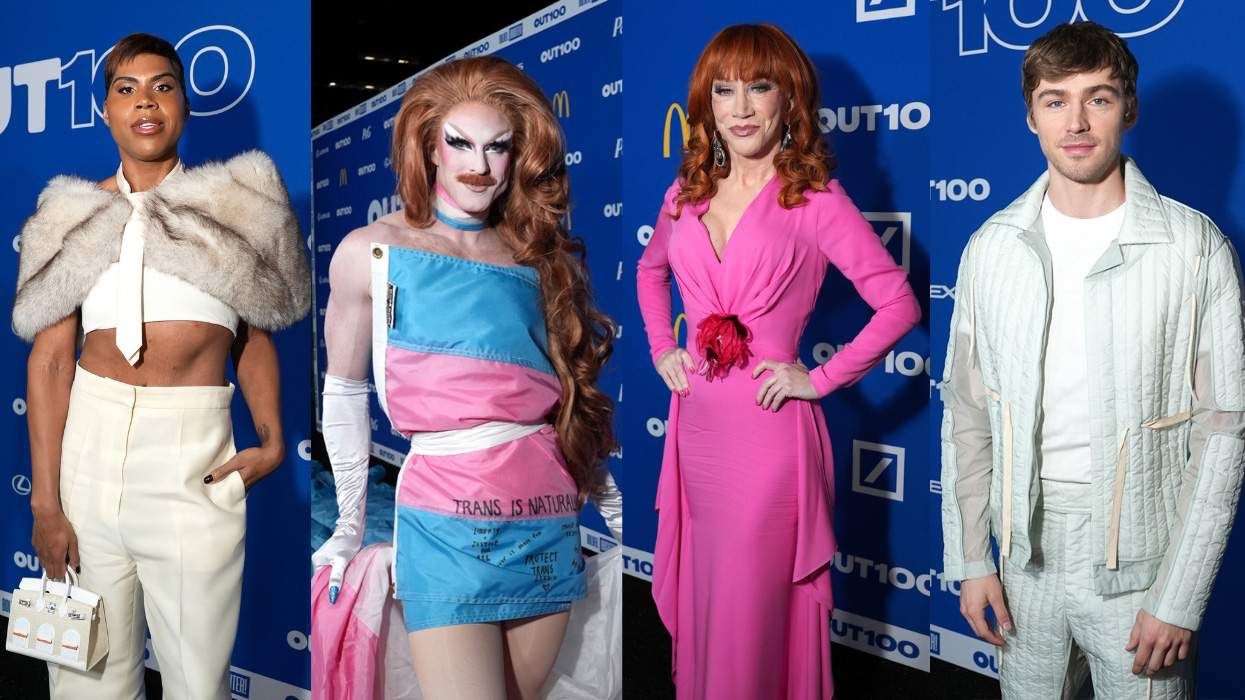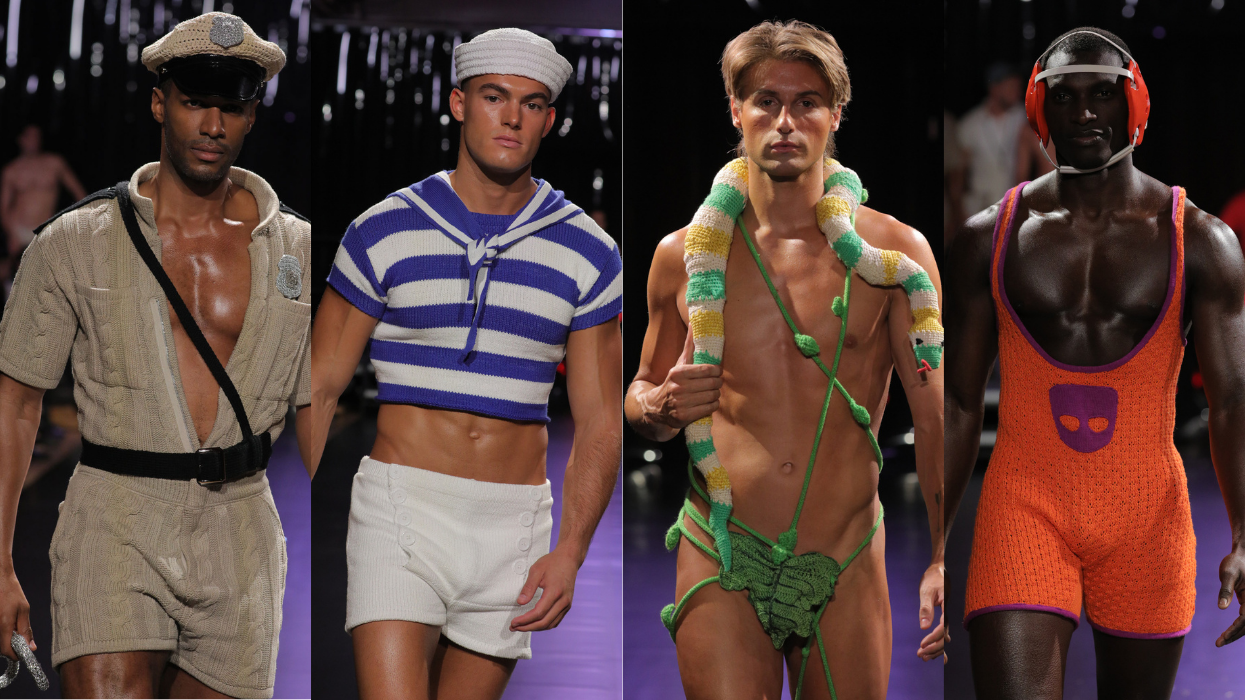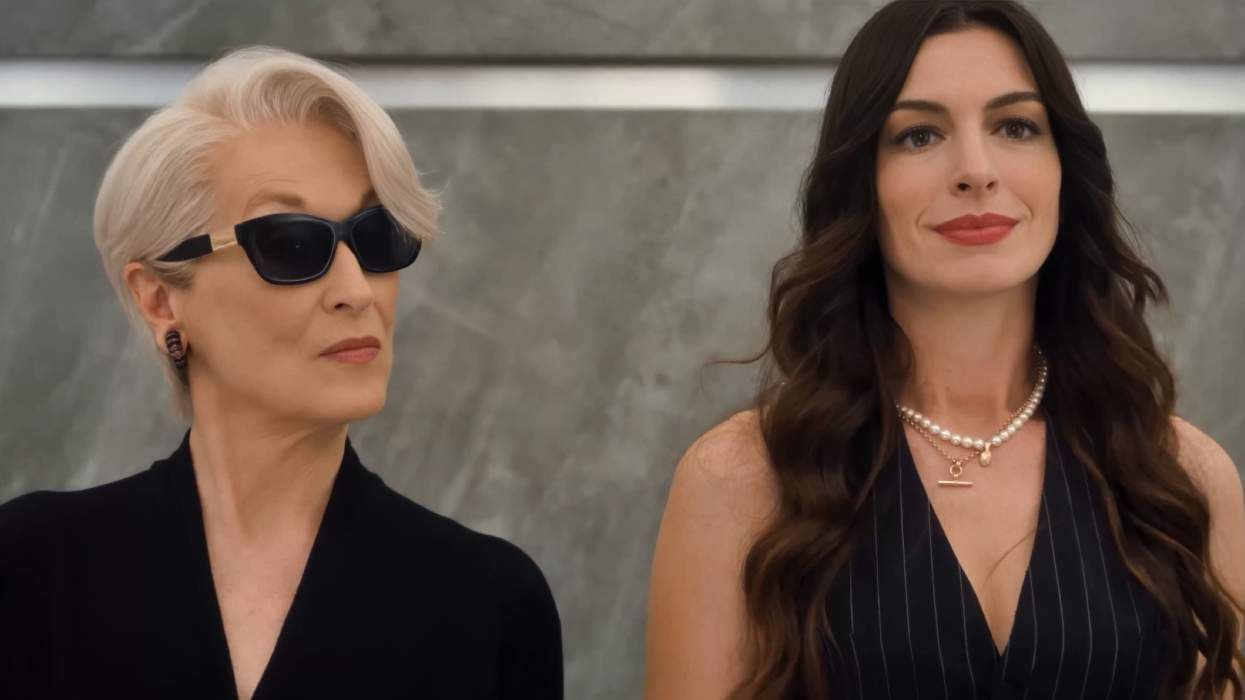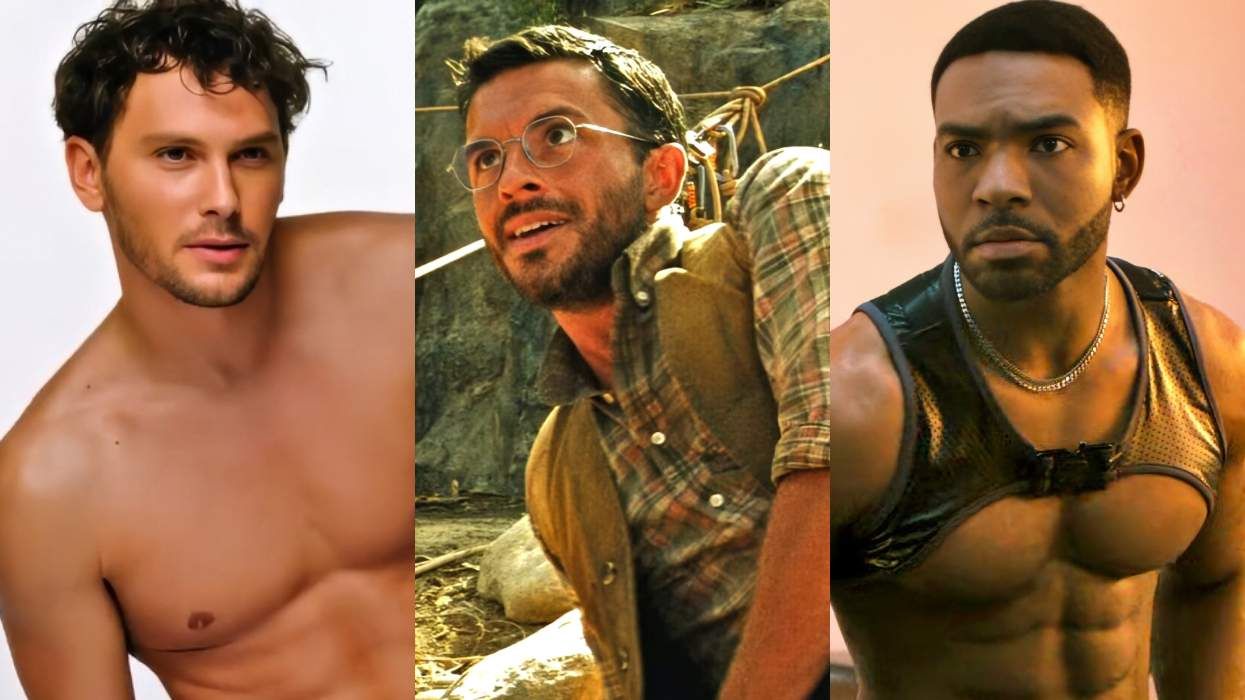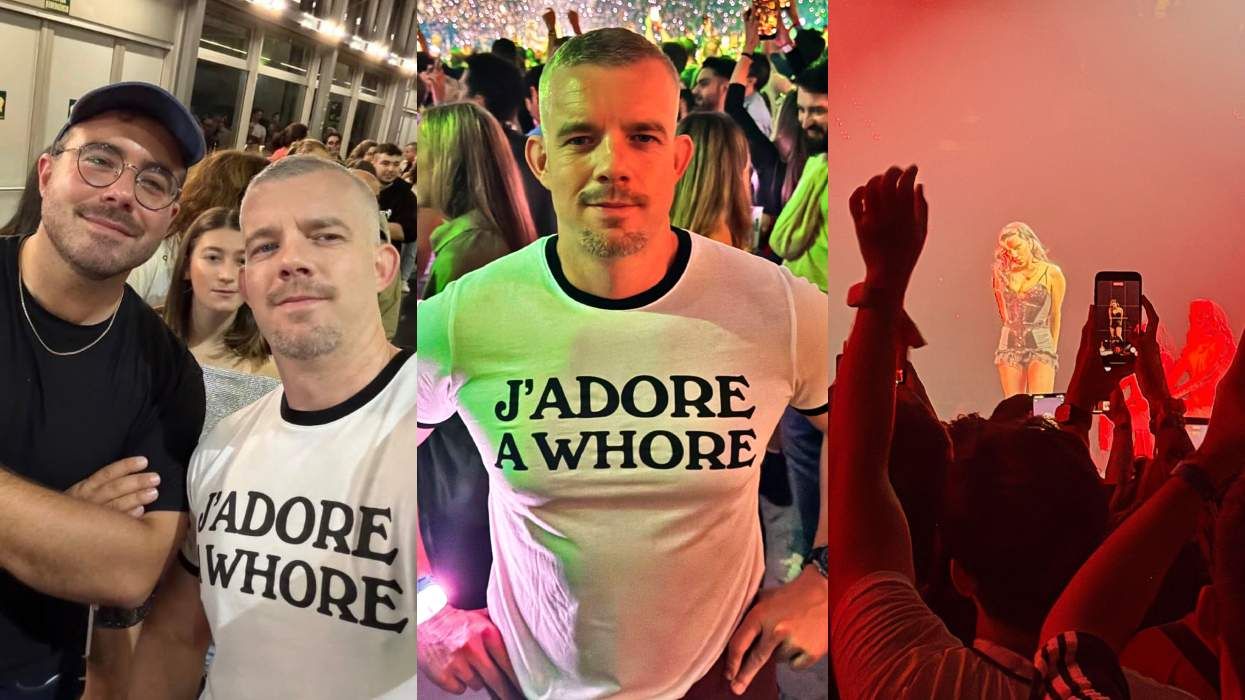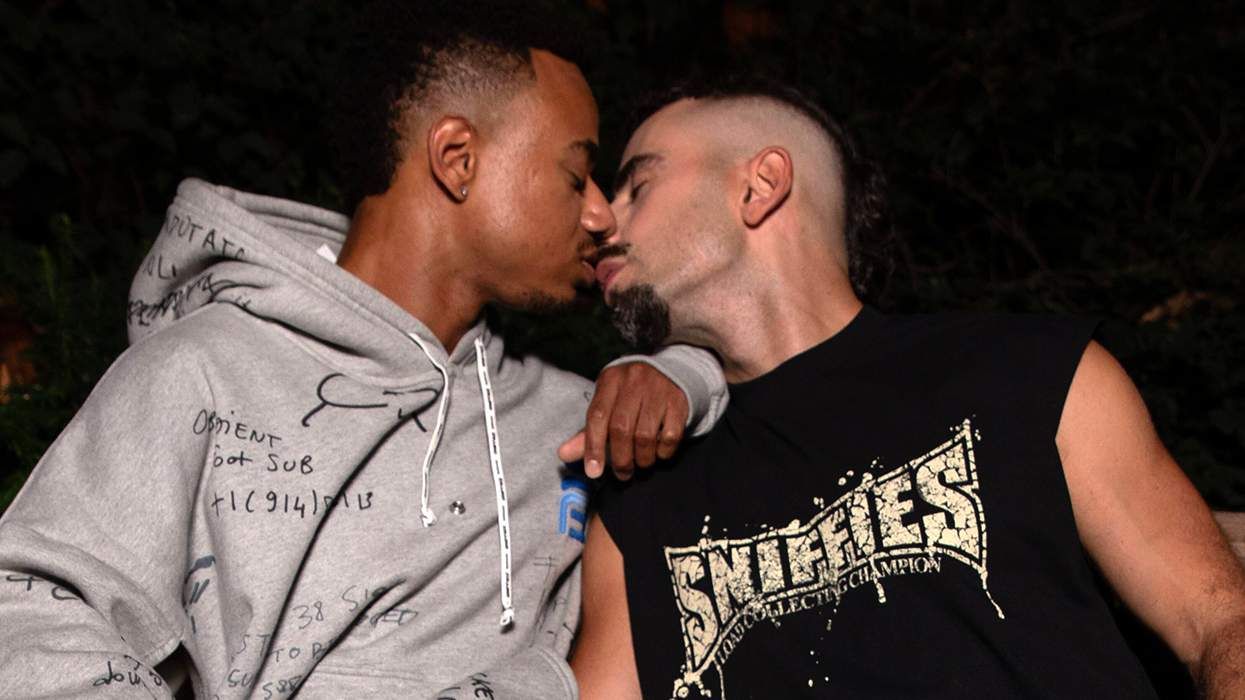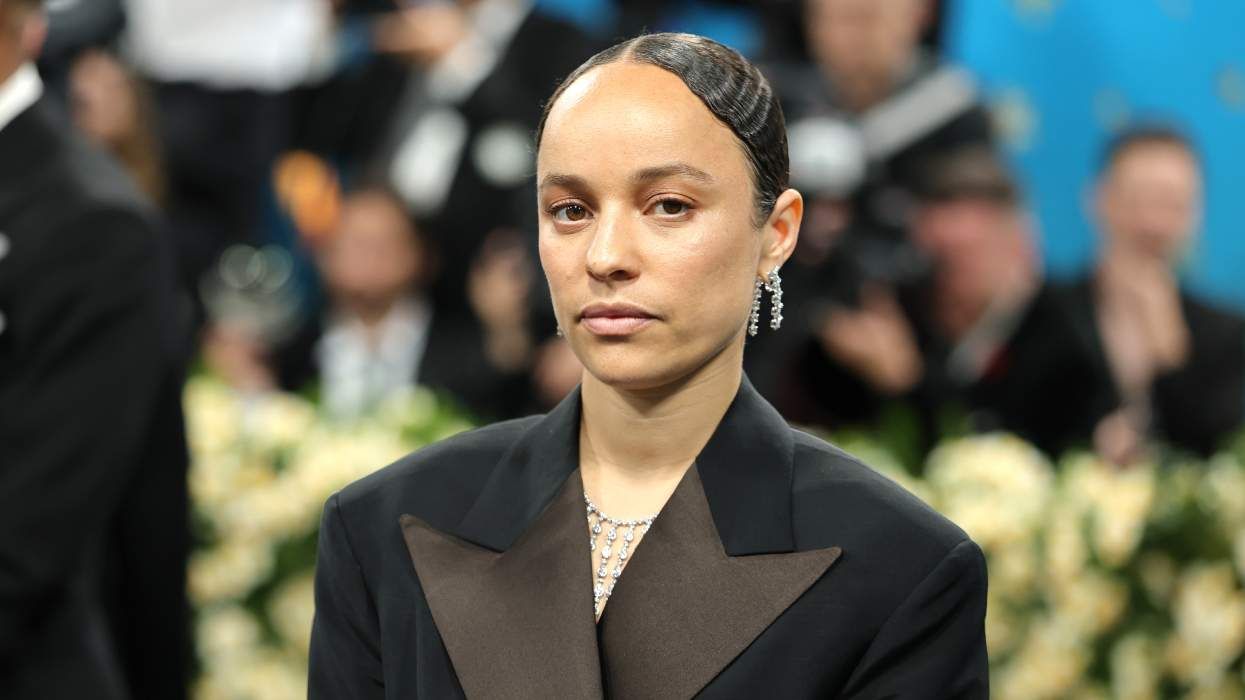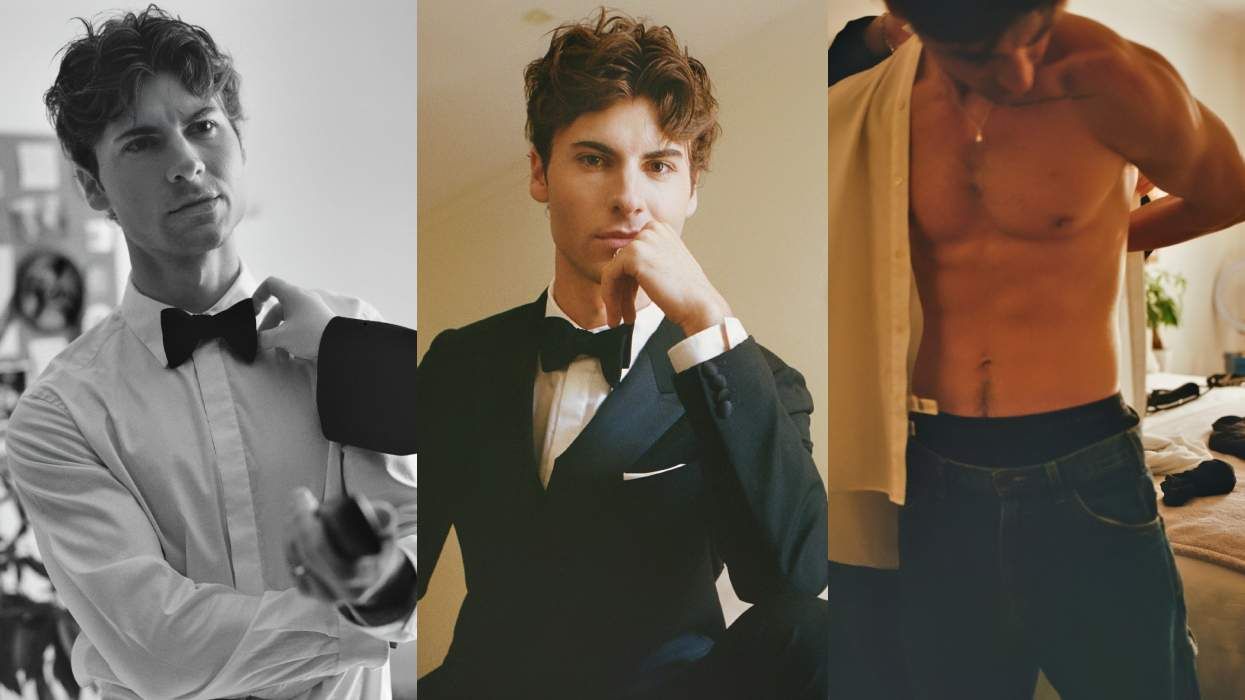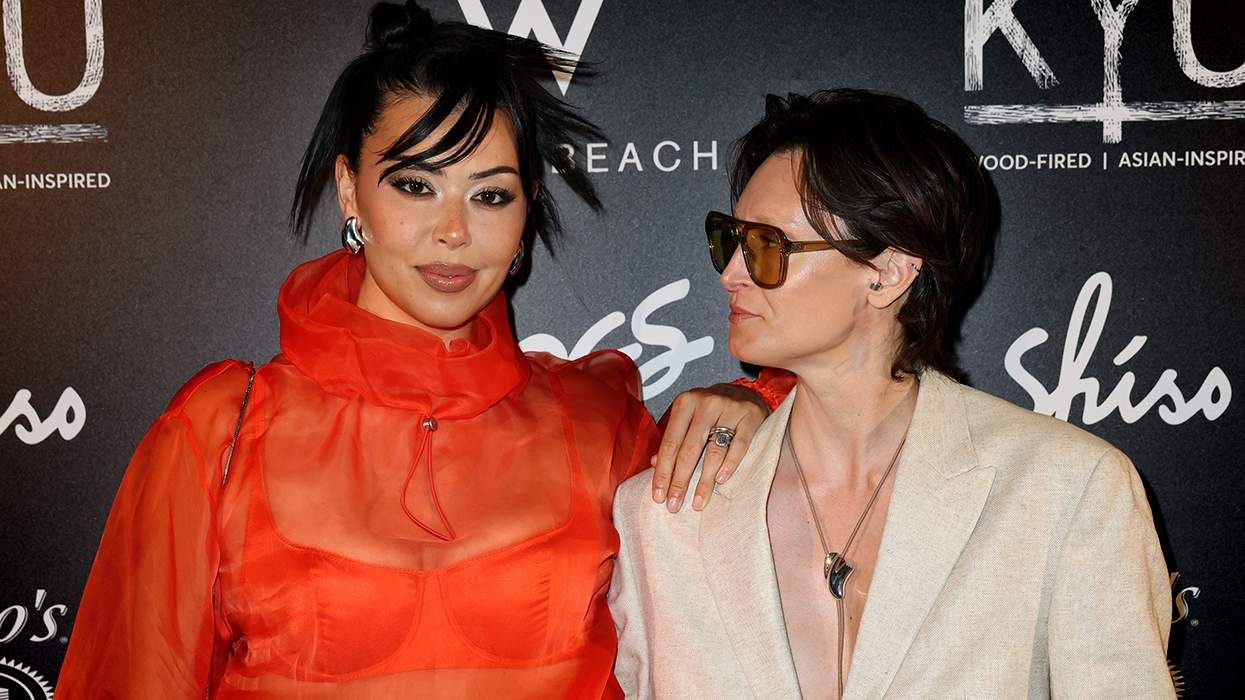With today's proliferation of cell phones and near-infinite access to social media apps, finding fashion inspiration isn't too difficult. But back in 2009, when we were all just starting to carry more of our lives in our hands (and pockets), those interested in upending cisheteronormative aesthetics had to scour the internet for others looking to do the same. At the time, Sterling Cruz-Herr (who then identified as a butch dyke) took cues from the queer fashion content popping up on Tumblr--then a nascent social media platform--and created dapperQ, a website focused specifically on queer fashion.
Cruz-Herr's initial writings on the site relayed their experiences navigating the world as a masculine-of-center woman, centering conversations around androgynous style for readers who were assigned female at birth (AFAB) and wanting to transgress "men's" fashion. At that time, dapperQ lived up to a more literal interpretation of its name and style, which invoked the term typically used to describe "menswear"that is neat in dress or formal in appearance. As dapperQ's Director of Creative Strategy and Brand Partnerships Nina Kossoff explains,"'Dapper' connotes suits and bowties, hats and wingtips, but that's such a narrow section of what fashion can be and what people want."
A year into dapperQ's launch, Anita Dolce Vita, a Black femme residing in New York City, joined the team. She was soon running the entire website on her own, writing articles and producing shoots while envisioning grander dreams for the site's future--like more original content on multi-platform networks, a full-scale magazine, social media activations, and large-scale events. More importantly, under the direction of Dolce Vita's Black femme sensibility, the types of people and fashion represented on the website shifted beyond showcasing masculine-of-center aesthetics. dapperQ, as it exists today, rejects binary archetypes, serving people of any gender, class, or sexual orientation.
"There was definitely a dearth of content and visibility for [femmes] in queer fashion," Dolce Vita explains."Femme style was getting lost in the conversation. Often times, people conflate femme style with white, binary, heteropatriarchal beauty and fashion that does not represent a wide range of queer femmes who have been at the forefront of challenging mainstream fashion's norms around size, race, ethnicity, able-bodied privilege, and pretty much anything that isn't deemed sexually desirable by heterosexual cisgender men."
One of Dolce Vita's major contributions to the platform has been "Hi Femme," a profile series which is described as"a sibling visibility project celebrating the incredible contributions that stylish femmes make to queer fashion." For Dolce Vita, the popularity of femme representation on the site has served as a bit of redemption: in her early days she was often asked not to speak to the press about her work with dapperQ because she was femme.
"This felt like a continuation of the erasure of the work that femmes and Black women do in larger society, work that often goes without credit," Dolce Vita explains."After ownership of dapperQ was transferred to me, I decided to become more visible and to extend that visibility to others who are often left out of important queer conversations."
Under Dolce Vita's leadership, dapperQ's popularity flourished. She describes the platform as filling "the negative space between Vogue, which showcased more feminine styles, and GQ, which focused on menswear but was not at all inclusive." But it became clear in 2013 that dapperQ's presence needed to expand beyond the realm of digital and editorial work.
In 2013, dapperQ hosted its first fashion show in a basement of Avenue, a New York nightclub, and thereafter, the show was invited to the Brooklyn Museum, which sparked other showcases at the Museum of Fine Arts/Boston, the Institute of Contemporary Arts/Boston, and the California Academy of Sciences. Then came content collaborations with Airbnb, Target, South by Southwest, and Nylon. Now, dapperQ can truly claim its place as a center of influence in queer fashion and culture, having furthered the careers of models Elliot Sailors and Rain Dove, spotlighted designers like the duo Stuzo, caught the eyes of celebrities like Lena Waithe and Willow Smith, and uplifted a legible queer presence in the fashion industry at-large.
The landscape for queer people in fashion has changed drastically since dapperQ's early days. Now, more queers than ever are unapologetically themselves on runways, billboards, editorial shoots, subway ads, makeup campaigns, and magazine covers--and with no small input from platforms like dapperQ, who didn't just get in ahead of the curve, but helped create it. This Fashion Week, as the dapperQ team celebrates its 10-year anniversary, its fearless leader is continuing to push for innovation. "Queer style is always about what's next,"Dolce Vita says,"It's always one step ahead of mainstream."
Devin-Norelle is a nonbinary model, advocate, and writer. Ze has written for Teen Vogue, Allure, them, and Out magazine. Ze recently walked in New York Fashion Week shows for Chromat and dapperQ.
This article appears in Out's forthcoming Sept/Oct 2019 issue honoring the best in queer fashion. To read more, grab your own copy of the issue on Kindle, Nook, Zinio or (newly) Apple News+ when it is released. Click here to subscribe to Out and don't miss it.


